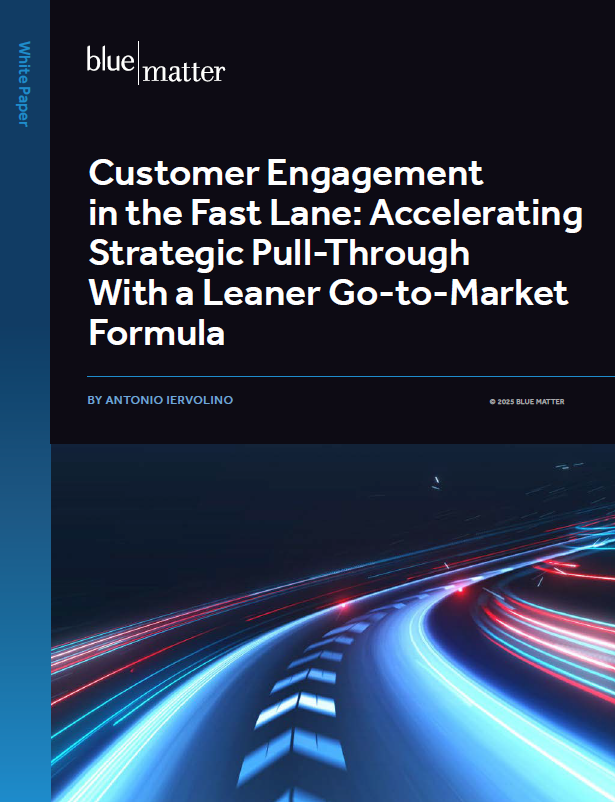
Basic and Essential
For any biopharma company planning an initial move into Europe, there are myriad issues to address, as this series outlines. One of the most important is ensuring that a company’s product(s) will be reimbursed by the various national payers that exist throughout European markets. It’s a basic truth: Payers are vital to a product’s commercial prospects. So, a strategic approach to payers is absolutely essential.
This is true is for several reasons. Compared to the US, payers in Europe are more “powerful” relative to healthcare providers and patients, so understanding their needs is critical. In addition, payer pressure in the EU is high and has been for many years. They have high expectations when it comes to added value over the standard of care (SOC), so new entrants must be compelling in how they calculate and communicate that value. Finally, market access in Europe is very heterogeneous. Payers, processes, timelines, pricing, and more vary considerably from country to country. The dynamic is very different from the US.
Getting pricing and access “wrong” in one market can have serious implications in others, so it’s critical to get it right. Two foundational components of “getting it right” in Europe are to 1.) Understand the European payer landscape and 2.) Systematically engage with payers to inform pricing, access, and reimbursement strategies. This article highlights key aspects of both components.
Many of the points raised in this article might seem rudimentary to readers who are at least moderately well-versed in the European access and reimbursement environment. However, emerging or mid-sized companies with limited experience in Europe should still take note. Potential entrants should gain a baseline understanding of the environment they’ll encounter, hopefully enabling more informed planning and decision-making.
Key Aspects of the Payer Landscape in Europe
Decision-making models vary across markets.
Payers in some countries use relatively centralized decision-making models (e.g., the Netherlands, and Germany to an extent). With centralized models, there’s one decision-making body regarding reimbursement, and its decisions are basically applied throughout the country.
In other markets, payers use more decentralized or regional models. With these models, there may be a centralized decision-making body, but regional governments have more latitude to restrict access to certain medicines, as they are responsible for managing their own regional budgets (e.g., Italy and Spain, though they’ve been making efforts to become more centralized in recent years).
Developing pricing, access, and reimbursement strategies—and engaging with payer organizations—can be more complex in markets that use decentralized approaches.
Assessment methods and concepts of value vary across markets.
Across Europe, different payers require different types of evidence and assess value in different ways. Companies must understand the mindsets and varying emphases of the payers with whom they must engage. To illustrate some of the differences, let’s consider a few examples.
- Germany, France, and Finland focus more heavily on clinical evidence. For example, in Germany, it’s critically important to have the right comparator for the right patient population(s) so payer decision-makers can assess a medicine’s “added benefit”. Using the wrong comparator(s) can severely restrict a therapy’s reimbursement and pricing potential. That’s why companies need to engage the authorities early in the trial design to ensure they are using the right comparators.
- The United Kingdom, Sweden, and the Netherlands focus more heavily on cost-effectiveness and health technology assessment (HTA). In the UK, for example, a lot rides on NICE’s QALY (Quality-Adjusted-Life-Year) score which essentially measures how much additional “quality life” a therapy adds to a patient (and at what cost). The upper limit of the threshold is typically £20,000 to £30,000 per QALY (though there are exceptions), so companies typically have to provide confidential price discounts to reduce their cost per QALY.
- Italy and Spain pay close attention to overall budget impact (within the context of clinical benefit). Products with large budget impact might receive greater scrutiny and face stronger pressure to provide discounts.
What constitutes “value” also varies a lot. For example, one country might favour Overall Survival (OS) vs. Progression Free Survival (PFS) or require head-to-head (H2H) data, data in specific populations, and so on. The key takeaway is that companies need to engage payers early to have an understanding of how they see “value” in a certain disease. What comparator are they looking for? What outcomes? How do they perceive the economic and the disease burden? Armed with that information, companies can improve study design and later, tailor their submissions and create strong clinical and economic value propositions.
This is a good time to stress (again) that early engagement is key. A company needs to engage before the pivotal study and incorporate learnings into study design. This is especially important in Germany, and the G-BA (The Federal Joint Committee) has a standard process for feedback on trial design.
Pricing varies across markets.
Prices in Europe are considerably lower than the US. As an example, in the UK, a traditionally very price-sensitive market, prices of the top-20 drugs are on average one-third the US price (Reuters). In addition, “real” prices are often considerably lower than published prices due to significant discounts, clawbacks, and rebates. For example, in Greece, discounts (even for novel drugs) can be as high as 50-60% off the official price.
Reference pricing has significant implications on overall EU pricing strategy and launch sequencing. If a company launches into a lower-priced market first, then it could severely hamstring its pricing in subsequent markets who use the first market as a reference. Reference pricing is one reason many companies choose to launch first in Germany.
Overall, achieving a good a price requires several key things:
- Early engagement with payers to gather input and feedback
- Having the right clinical data
- Presenting that data to payers in ways that are relevant to them and meet their needs (i.e. Strong “value messaging”)
For example, bluebird bio has done a good job of engaging EU payers early to manage the high upfront cost of its transfusion dependent thalassemia (TDT) gene therapy. They have created a strong value story around the cost of treatment over a TDT patient’s lifetime (direct cost savings) and how their gene therapy can reduce costs while also improving overall quality of life. This provides additional “intrinsic value” beyond just the obvious treatment savings. The company is also actively considering alternative access models combined with installment plans tied to performance (20% upfront and then four installments of 20% tied to patient outcomes).
Timelines for local reimbursement post-EMA vary across markets.
In the US the average time from regulatory approval to first sales is about two months. Across Europe, these timelines can vary quite a bit. In Germany, sales and reimbursement can come immediately after EMA approval. In Switzerland, that comes roughly two to three months after Swissmedic approval. In France, the time period is about a year while in Italy and Spain, it can take much longer, depending on the situation.
In many markets, having people with strong local experience and connections can help expedite the process. These people may be internal to the company or accessed via vendor relationships.
For any given market, a small biopharma company must weigh the benefits of entering vs. the effort required. In the beginning, it might only make sense to focus time and money on the most lucrative markets (e.g. Germany, France) and do these really well before moving to others (i.e. launch in waves).
Alternative access models can improve access.
Some countries in the EU have programs designed to give patients early access to therapies that address important unmet needs. These programs are particularly helpful to patients and physicians who would have no alternatives otherwise, and we’ll explore them in more detail in a future article.
Companies should explore these programs to see if they may be appropriate vehicles for getting new therapies to patients sooner. One example includes a Temporary Authorisation for Use (ATU) in France. This and other Early Access Programs (EAPs) can have a significant impact on launch planning and timing.
However, the ability to conduct an EAP often depends on the disease area and the unmet need. It’s important to note that these schemes are limited and can have significant pricing and access implications in the longer term. Companies should examine their options carefully before deciding which to pursue.
In short, EAPs and similar programs can offer benefits, but they can also bring complexities and potential drawbacks. Any company planning to enter Europe should become familiar with their options and be able to conduct the appropriate risk / benefit analyses.
Steps in Building a Payer Engagement Plan
Building an understanding of the payer landscape is not just an academic exercise. It helps inform how companies should interact with payers as they work to optimize the commercial value of their products.
Early—and ongoing—engagement with payers is very important, preferably starting before pivotal trial design. This helps a company gain deeper knowledge of payers’ needs and expectations and can later help gauge reaction to potential value propositions and pricing strategies. Failing to engage properly can limit access while causing significant delays and added costs. To ensure that interactions with payers take place at the right times and in the right ways while adding value, a company must build a payer engagement plan. Below, we outline a few high-level steps in doing this.
-
Prioritize markets.
The first step in building a payer engagement plan is to prioritize the markets that are most important to the company and that will be the first ones in which the product(s) will launch. These decisions will most likely be made within the larger context of commercial planning.
-
Determine the input needed from each payer.
As a company moves through its market entry processes, the types of input that it will need to get from payers will evolve. Early on, during the period leading up to clinical trial design, input is required to inform study design. This input can be collected through direct engagement or by vendors (depending on the country). Later on, the company may need input on detailed pricing, reimbursement and access strategies, payer messages, and the like (which is done via payer research using third party vendors).
-
Create a target list for outreach (payers and people).
Before taking steps to engage with payer decision-makers, a company has to identify who those people are. When developing an outreach target list, it’s important to understand the applicable legal and compliance rules. National payers usually have standard processes for seeking advice. The company’s pricing and market access team (or a qualified consultant) can help outline what is and is not allowed, as well as the best methods for executing outreaches.
-
Develop an implementation plan
It’s rare that a small to midsize company entering Europe for the first time would have a fully-built market access team and significant experience with European payers. In most cases, a company will need to leverage both in-house and outsourced resources to implement its engagement plan.
Before initiating outreach, the company must determine what in-house or outsourced roles it will need on the ground, then move through vendor evaluation and selection. Finally, it should develop a rough timeline for conducting outreach, collecting and analyzing inputs, and applying insights to strategic decision-making.
Conclusion
Armed with an understanding of the payer landscape, a company planning to enter European markets should begin strategically engaging with payers as early as possible. This will help ensure that clinical trials are designed to yield data that is relevant to payers who, after all, are key to a product’s commercial viability.
Later, ongoing engagement with payers will provide valuable input regarding potential pricing, access and reimbursement strategies, payer value propositions, and so on. In any case, a company’s engagement with payers should be strategic, systematic, well-planned, and in accordance with applicable regulations.
Blue Matter Expert Contributors:
- George Schmidt
- Theofanis Manolikas







